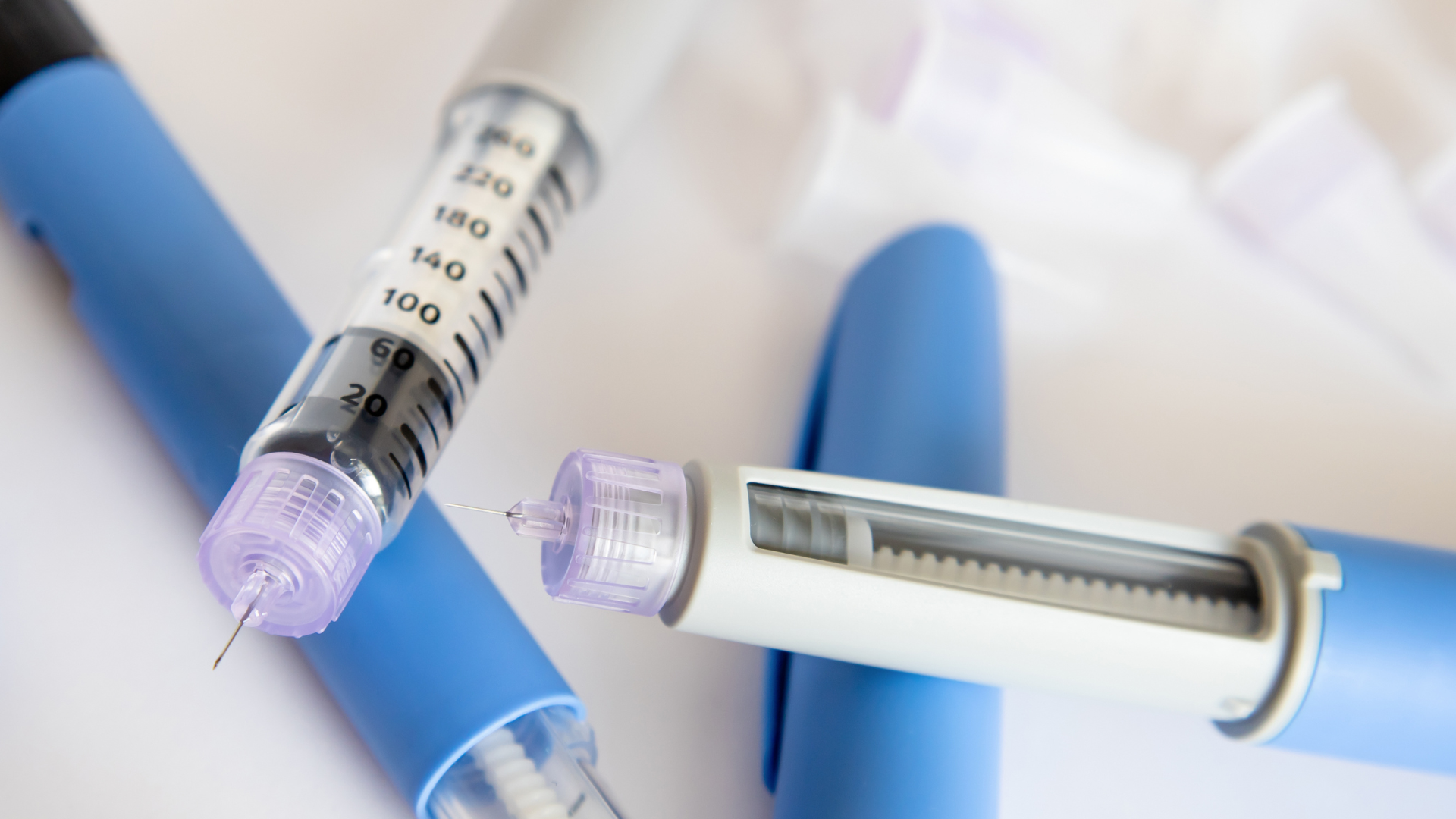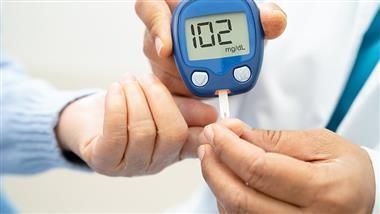Giving CGM Access to All People With Type 2 and Other Diabetes

Leading clinicians at the ATTD conference discussed the need for greater CGM access for people with type 2 diabetes, as well as those with cystic fibrosis-related diabetes.
A panel of internationally renowned clinician-researchers presented data during the opening session of the Advanced Technologies and Treatments for Diabetes (ATTD) conference in Berlin, demonstrating how the use of continuous glucose monitors (CGM) benefits both people with type 2 diabetes and those with cystic fibrosis-related diabetes (CFRD).
While there is no question that there is science to support the use of CGMs for people with type 1 diabetes, the presenters agreed that the jury is still out on the use for type 2 diabetes because there isn’t enough solid evidence yet. They laid out strong arguments that what we do know leans strongly toward better results for type 2 diabetes and a strong call for more research.
In addition, as people with cystic fibrosis are living longer, diabetes is becoming an increasing problem. Citing initial data showing how people with type 2 diabetes and CFRD seem to have improved outcomes with CGM, the panelists strenuously called for increased research to further the understanding and potential adoption of such technology among this population.
The limited data that exists suggest that use of a CGM can make the diagnosis of diabetes earlier, improve outcomes and motivate people to make healthier choices in diet and lifestyle, no matter if they are taking insulin or not.
CGMs for people with type 2 diabetes
Dr. Richard Bergenstal, executive director of the International Diabetes Center at Park Nicollet and clinical professor in the Department of Medicine at the University of Minnesota, began by noting that 90% of those with diabetes have type 2 diabetes and that “all the data is pointing in the right direction” for the expanded use of CGM for those with type 2 diabetes.
Bergenstal addressed the particularly thorny problem of people with type 2 diabetes not on insulin and whether they can be helped by wearing a CGM.
Dr. Lalantha Leelarathna, consultant diabetologist and honorary senior lecturer at Manchester Diabetes Centre, University of Manchester, agreed that CGM use in those with type 2 diabetes is important. As more and more people get diagnosed at earlier ages and they are unable to reach their glucose targets we need a powerful tool like CGMs to help this group do better, he said, given that the earlier someone is diagnosed the longer they will have diabetes and its complications.
He proposed the idea of “eating to target” as a particularly effective way of helping people with type 2 diabetes and the role that CGMs can play in achieving those targets. But, he said, we need a better understanding of how the use of CGM affects self-management.
“There has been a significant shift in how we manage type 2 diabetes,” Leelarathna said, calling it good news. The use of CGMs in type 2 diabetes supports the use of newer treatments with heart and kidney benefits such as SGLT-2 inhibitors and GLP-1 agonists that the data shows are beginning to replace older drugs without such benefits such as sulfonylureas (SFUs) and TZDs.
Dr. Satish Garg, of the Barbara Davis Center for Diabetes at the University of Colorado, went a step further and called for earlier initiation of newer treatments such as tirzepatide. He presented a series of patient stories that illustrated how using CGMs to regularly track glucose levels encouraged changes in eating habits and other behaviors. In combination with the right medication, he said, such technology can be a powerful tool for diabetes management in those with type 2 diabetes, no matter if they are using insulin or not.
“Of course, CGM should be part of diabetes education, management and support for all people striving to live well with diabetes,” Bergenstal said.
Leelarathna joined Bergenstal in calling for more randomized controlled trials to provide additional data showing how CGM use can help people with type 2 diabetes, no matter if they are taking insulin or not.
Leelarathna outlined some needed areas for further study, including more research of CGM use in people with type 2 diabetes who do not use insulin, whether they are on other diabetes medications or not; trying to better understand how CGM affects self-management behaviors such as diet, exercise, sleep and medication adherence; assessing the impact of CGM to quality of life and other patient-reported outcomes; its impact on diabetes complications; considering the impacts of age, ethnicity and social factors on CGM-related outcomes; and how to simplify and enable greater access to and use CGM data to improve people’s lives.
“The evidence so far suggests that CGM may be beneficial in those with type 2 diabetes with both intensive [multiple daily insulin] and basal-only [once-daily] insulin regimens irrespective of residual pancreatic function.” Leelarathna said. While noting that early results have been encouraging, he said, “Further work is needed to establish the full potential and role of glucose sensors [CGM] in the journey of type 2 diabetes treatment.”
Garg also emphasized the importance of access to CGM, particularly in less developed countries, as those are the places in which type 2 diabetes is growing the quickest. The patient stories he shared help put a human face on the importance of advancing the research for people with type 2 diabetes so that patients can do better.
He acknowledged that one of the biggest obstacles to more widespread adoption of the technology beyond its current scope was cost and its ability to be covered by insurance.
“We deal with people from more than the United States and western Europe,” he said, “and I applaud companies such as Abbott for making their Libre system available to the masses.”
CGMs for people with cystic fibrosis
Cystic fibrosis-related diabetes (CFRD) is a type of diabetes that develops in people with cystic fibrosis, a genetic disorder that affects the lungs, pancreas and other organs. Dr. Melissa Putman, an adult and pediatric endocrinologist at Boston Children’s Hospital and Massachusetts General Hospital as well as an assistant professor at Harvard Medical School, spoke about why people with CFRD see health benefits from using CGM.
Putman noted that, like people with type 2 or type 1 diabetes, people with CFRD require careful management of blood sugar levels to avoid complications such as heart disease, kidney disease, and nerve damage. CFRD is a unique form of diabetes that affects about 40,000 people in the United States and about 100,000 worldwide. Life expectancy for people living with CF has increased dramatically over the past few decades, from 33 years in 2001 to 53 years in 2021, but as these people live longer, various complications, such as CFRD, are becoming increasingly prevalent.
Putman explored the role that CGMs could play in people with CF, which have seen significantly better outcomes with new drug therapies that allow them to live longer but, as a result, now must deal with the disease progression that damages the pancreas. There is evidence, she said, that lack of glucose control worsens lung function and that fast blood glucose tests are not effective in identifying glucose variability.
Putman described one of her patients with cystic fibrosis who had a normal A1C of 5.7%, but CGM showed she had multiple highs and lows throughout the day, as shown in the graph below.
“If you use just A1C, you are going to miss this glucose variability,” she said, emphasizing the importance of using CGM. She added that in a study of 20 adults, using the iLet bionic pancreas with the Dexcom G6 improved time in range for the study participants with CFRD, compared to usual care.
Putman also noted that one of the greatest challenges when addressing CFRD is initially screening for diabetes. The CF Foundation currently recommends an oral glucose tolerance test (OGTT) for people with cystic fibrosis over 10 years old. However, rates of annual OGTT testing in adults are very low – only 30% of adults with CF were screened for diabetes. CGM may potentially be an effective tool for expanded screening, she said.
“The screening test will only be helpful if it is actually done,” Putman said. “We are missing opportunities to diagnose these patients early.” CGM may also be helpful, she added, in the ongoing management of CFRD, both with and without AID (automated insulin delivery) technology, as people with this disease are living notably longer lives than they used to.
“This is an exciting and active area,” Putman said, “for research in the application of new diabetes technology to this patient population.”
by Arvind Sommi & Michael Howerton
From diaTribe Learn
Healthy Bites















